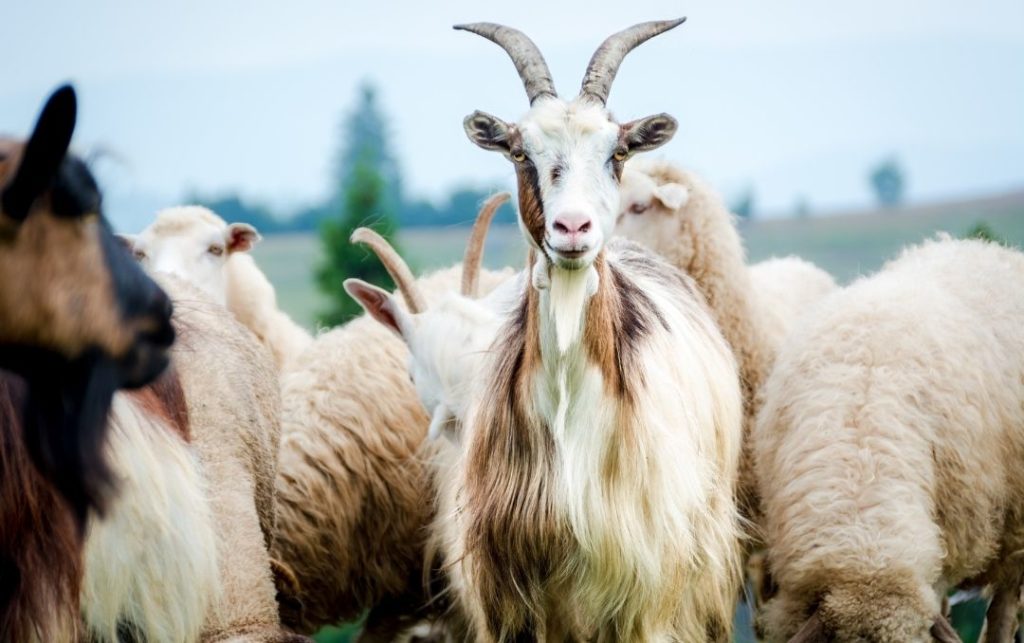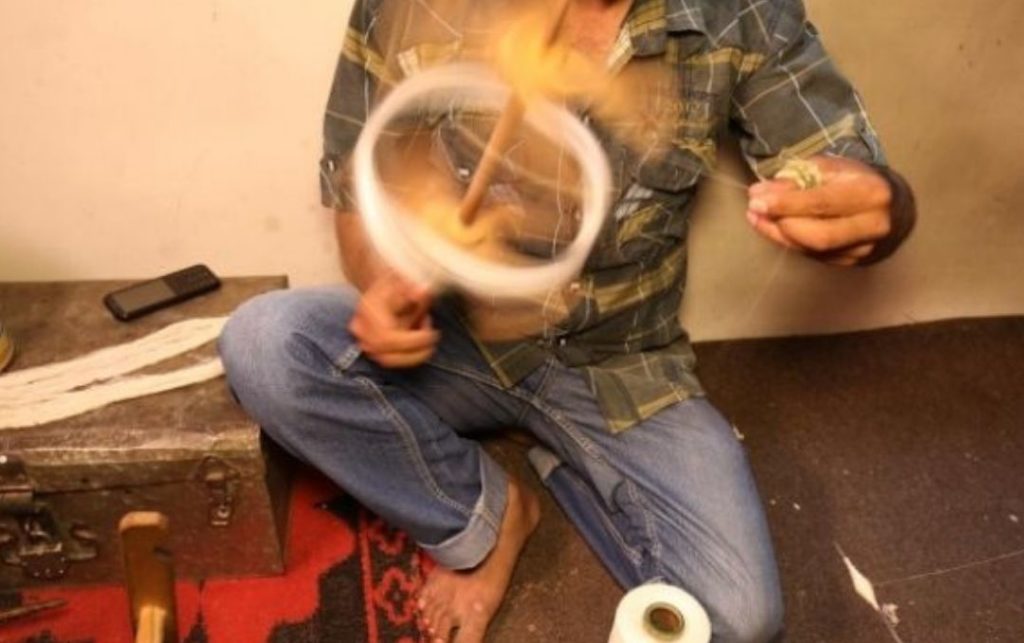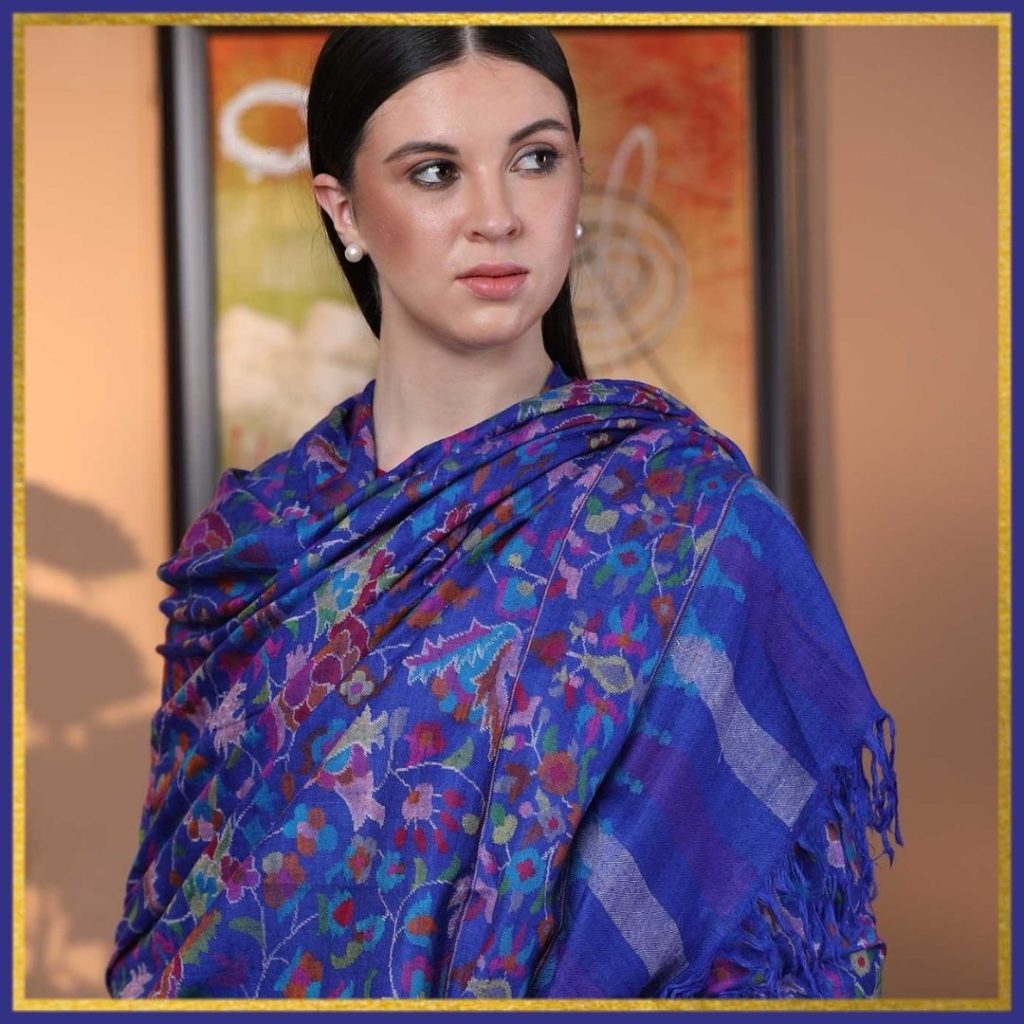One of the rarest natural fibres in the world, Cashmere is a type of wool that comes all the way from the majestic Himalayan ranges. But how do we reach such places, where even basic essentials took too long to.
Changthang
Changthang - a region novice to the common man - is a part of the Tibetan plateau that extends into Southeastern Ladakh. The place consists of large lakes and huge highlands, which are a treat to the eye if you are visiting it. Mostly the nomadic population inhabits Changthang and it is just them and their goats and sheep who bear the harshness of the region together.
The climate at Changthang is no less than the Arctic itself. In winters the temperature drops to -40 degrees due to high elevation. Summers are warm but short, and life is pretty difficult for the locals and impossible for visitors who fail to understand how these nomadic people survive. This is where Cashmere comes from.
Nomadic Tribes of Changthang
Most of the population in Changthang are Buddhist nomads. These people are pastoralists and survive the harshness of the region with the help of their animals and the plants that they graze. The Changpa tribe does not move from this place, and mostly they spend their entire lives in this region. Since most of the people are not wealthy and have the least resources, they live in tents. A camp consists of a number of tents where the neighbors live in complete harmony. The economy of the region depends only upon the animals that Changpas rear. Products like Salt, live animals, wool, and unprocessed cashmere are traded with other parts of the country for basic essentials like grain, cooking utensils, and more.
Also read: History of Pashmina trade
The Changthangi Goat

The Changthangi goat/Pashmina goat/Cashmere goat is the main attraction of the region for a number of reasons. It is this goat that grows the highly valued and precious Cashmere wool on its body.
It is the cold temperature of Ladakh which plays a crucial role in growing fine wool on the goat’s underbelly. This is the world's finest fibre, which upon spinning gives yarn of just 12 to 16 microns in diameter and is exceptionally warm and comfortable.
The goat survives on grass that grows along the pastures of its living area. Changthangi goats are the primary boosters of the economy of Ladakh, which otherwise is a poor economy. It's just the trade of Cashmere that generates millions for the economy to stand.
Changthangi goats have a double coat - a thick undercoat and a dense wavy overcoat. Usually, the goats are white in colour, but grey, ash, brown goats too can be seen in smaller numbers. The Goats have long, rounded horns, and an average lifespan of 10 to 12 years.
Where does Cashmere come from?
If you have been wondering "Where does Cashmere come from", here is the answer. Cashmere wool, or simply Cashmere comes from these Changthangi goats. It grows on the goat's underbelly, backbone area, behind the ears, and on the neck. Collection of the wool begins during the moulting season, which is Spring. It is the time when the goat naturally sheds some portion of its wool due to discomfort from its warmth. This time is usually late March to early May.
The goats grow the wool in winter and hence protect the animal from the cruel winter season that the region experiences. Come summers, the same warmth makes it uneasy, and hence it rubs its body against walls, shrubs, stones, and all over the area. Herders realize it's time, and call professionals to remove the wool from the goats’ body. With the use of specialized tools and combs, professionals gently comb off the wool from the body of the goats and let them roam freely while storing the wool in small packets.
This wool is full of wastes that the goat's body catches from winter to summer. It has dust, dirt, vegetable wastes, grass, and other materials which need to be cleaned. The first cleaning session takes place at Ladakh itself. A number of people clean the wool off Pure Cashmere and send it to Kashmir for further processing.
Processing of Cashmere
Cashmere comes from Ladakh as raw, semi-clean wool to Kashmir, it is firstly handed over to the womenfolk of the valley, who belong to distant corners of it. Women come together and, in groups, start cleaning Cashmere wool, removing all foreign material attached to it. Clean wool is then placed in a container, which is then filled with rice powder. This powder makes the wool smoother and stronger. After 3 to 4 days, the wool is removed from this rice container and cleaned again, only to get a smooth, fine, and luxurious pure Cashmere wool lump.

Pure wool is then sent for drying and then taken for spinning. Again it is the womenfolk of the valley who take this responsibility. Lumps of wool in bags are given to them and they mount it over a spinning wheel called ‘Yinder’. It takes months together to manually spin this lump of wool and transform it into yarn. This process needs immense skill and patience as well as a perfect harmony between the spinning wheel and the motion of the hand. Only Kashmiri women have the inherent skill and training of decades to perform these actions.
Weaving the Spun Cashmere
Now Cashmere yarn is sent to handloom units where a few men work. These men too have decades-old experience in weaving such delicate yarn. They start with mounting the threads properly onto the heddles of the loom and then work in pairs to weave it. In a period of 3 to 4 days, fine-spun yarn changes to a solid Pashmina shawl, soft, fine, and absolutely grand.
Finishing of the shawl
A solid shawl coming out of the loom isn't yet complete and contains some superfluous threads or stains over the base. A Purzgar tweezes off or clips any waste materials attached to the base. In fact, the shawl is fixed between two rollers that move up and down and give the artisan a close look at the fabric, so that the end product is smooth.
Now the shawl is taken to a washer, which washes it in running water. Springwater is mostly used to wash Cashmere, which is continuously struck with large stones for the perfect wash. Later, the fabric is dried in the open air, as natural drying is preferred for Pashmina shawls. Post this, it is sent for mechanical stretching and ironing
Now the shawl can be sent for dyeing. Pashmina shawls have this wonderful quality of taking in any colour.
Embroidering Cashmere Shawls
Traditional embroidery patterns further uplift the solid Pashmina shawls, by beautifully sitting over the luxury base in breathtaking patterns. Here are some embroidery types for Pashmina shawls.

Sozni Embroidery: A fine thread and needlework where artisans use colourful threads to ornament plain shawls. Sozni can be done all over the delicate base of PAshmina, as it itself is lightweight and gentle.
Papier Mache Embroidery: Paper Mache embroidery is a somewhat thicker version of Sozni Kari, as the threads used are denser and protruding. Such shawls laden with Paper Mache work look magnificent and artful.
Tilla Embroidery: Tilla embroidery uses metallic threads dipped in real gold and silver to create magical patterns and motifs over a Pashmina shawl. Tilla is however dome in minimal patterns, as its weight might perforate the gentle base underneath.
A Pashmina shawl is complete now. How a simple fabric Cashmere, which comes from an almost inaccessible region of Ladakh, reaches Kashmir is purely amazing. And from Kashmir, it is spread all over the world. That is how precious and adored are traditional belongings. Cashmere wraps have a lifetime of over 25 years. Mothers give their own Pashmina shawls to their daughters as gifts when they are getting married. These shawls sometimes are 30 years old but haven't lost a bit of grace and luxurious demeanour. But have just acquired an heirloom look, which looks even more ethereal than a fresh piece.
Also read: Pashmina Embroideries - The Exquisite Craftsmanship
Pure Cashmere From Authentic Sources

Since Cashmere generates much revenue, frauds are bound to happen. Some decades back, traders started processing Cashmere on power looms, by mixing strengthening fabrics like nylon or silk with pure threads. This gave fake Pashminas or blended Pashminas, which were still sold at the same rates as pure Cashmere would. Others soaked sheep wool shawls in Fabric softeners and sold them as pure Pashmina shawls. This created havoc in the Cashmere market, as people believed that the quality of pure Pashmina might have declined. Hence there was a decline in the demand, as well as the associated jobs. Several underprivileged artisans went jobless, some opted for labour work, and some earned a meager amount not enough for even a day.
Hence, it is important to watch out for the source of your Cashmere shawl if you're buying one. Always buy from an authentic vendor. Ask the vendor to provide you with the certification or authentication certificate of the product you are buying. If he is unable to show you the same, stop buying from the same. Check for the GI tag, which is a purity label on the shawl, proving the shawl to be made of pure Cashmere.
Also read: 7 tests to identify genuine Pashmina